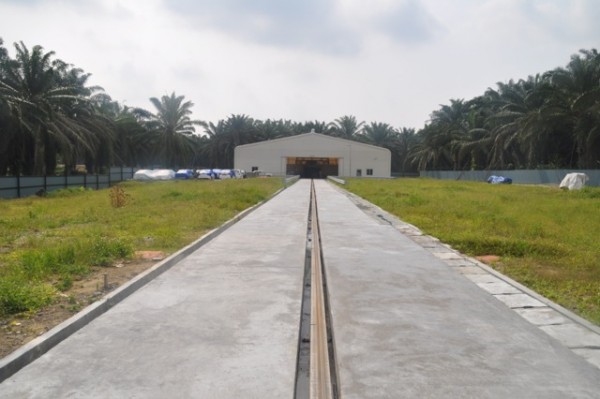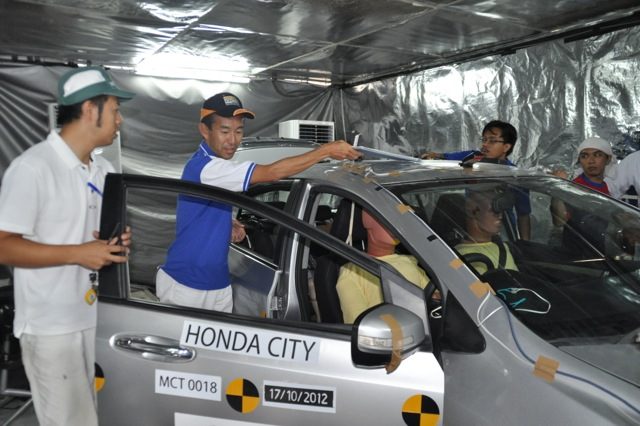Currently, MIROS – Malaysian Institute of Road Safety Vehicles, runs the show for the ASEAN New Car Assessment Programme (ASEAN NCAP) crash test at their purpose-built lab in Malacca and Honda Malaysia gets in on these tests as part of a long-term commitment towards advanced safety technologies in its vehicles.
Honda Malaysia recently provided a new Honda City to MIROS to undergo their Phase I testing where sedans and small cars are sent to be…well, crash tested, which was recorded at a speed of 63.6kmh. Following this initial test, another City will undergo an official ASEAN NCAP crash test to be held in December 2012, in order to help confirm the results found on the earlier test.
Honda’s safety experts have arrived from Japan in order to assist MIROS’ efforts by proactively supporting the development of ASEAN NCAP through the provision of technical expertise and guidance to help uphold the assessment to reach international crash standards.
On hand to guide the MIROS team on various aspects of he crash-test session were Mr. Yoshiji Kadotani, Mr. Tadashi Mashita, Chief and Assistant Chief Engineer of Honda’s R&D who provided their knowledge on Dummy placements, the ideal in-car temperature for monitoring the dummies, the mechanics to achieve the desired speed for accuracy in results, how to tweak the cables for the right tension when the car is pulled – all of which were only some of the details that the team worked on with MIROS to simulate a real crash situation. Mr. Kadotani, Mr. Mashita and their team have extensive experience in vehicle safety, having crash tested more than 20,000 vehicles.
At the crash test session, the MIROS-NCAP’s Development Manager, Mr. Khairil Anwar reiterated his gratitude for Honda’s willingness to work hand-in-hand with MIROS towards setting an ASEAN safety assessment standard.
The new Honda City boasts of a body structure that’s built with the G-force Control Technology (G-CON) to help disperse and absorb the impact energy of a crash to help significantly reduce injuries. In addition, the Honda City’s passive safety includes Dual Front SRS Airbags and a 3-point Emergency Locking Retractor (ELR) seatbelts. In terms of active safety, there’s Honda’s Vehicle Stability Assist (VSA) which incorporates traction control (TC), Anti-Lock Braking System (ABS), Emergency Brake Distribution (EBD) and Brake Assist (BA).
Honda says, all their cars meet the United Nations Economic Commission for Europe (UNECE)’s R94 and R95 regulations, which encompasses the protection of the occupants in the event of a frontal collision (R94) and the protection of the occupants in the event of a lateral collision (R95).
Come December 2012, we can hardly wait for the Honda City’s crash-test results to be publicly released by MIROS on the ASEAN NCAP website – though the site doesn’t seem quite ready to have gone live just yet, but none-the-less it is available.















